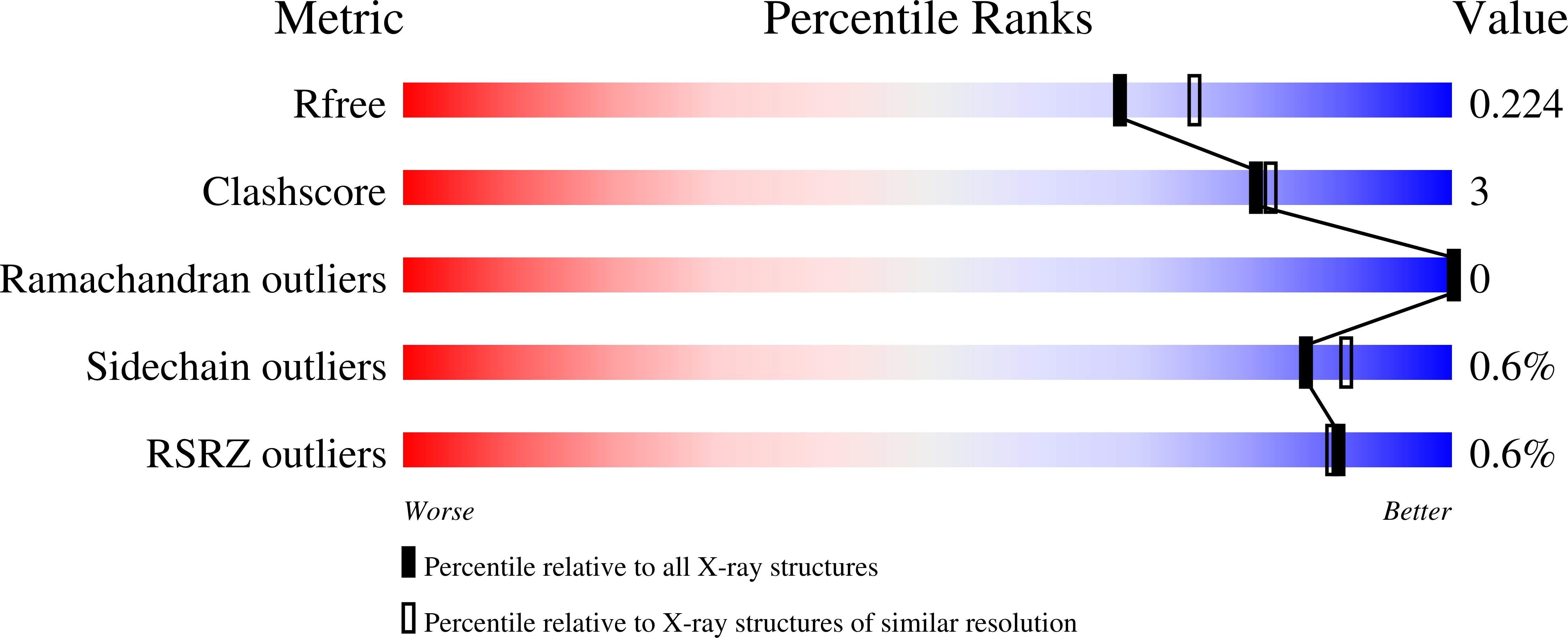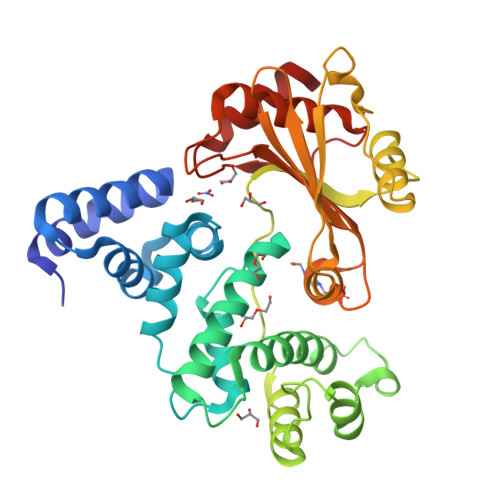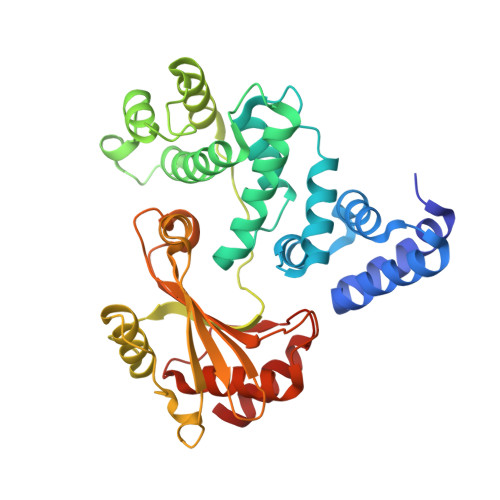On the Use of Legionella/Rickettsia Chimeras to Investigate the Structure and Regulation of Rickettsia Effector Ralf.
Folly-Klan, M., Sancerne, B., Alix, E., Roy, C.R., Cherfils, J., Campanacci, V.(2015) J Struct Biol 189: 98
- PubMed: 25498244
- DOI: https://doi.org/10.1016/j.jsb.2014.12.001
- Primary Citation of Related Structures:
4D7Q, 4D7R - PubMed Abstract:
A convenient strategy to interrogate the biology of regulatory proteins is to replace individual domains by an equivalent domain from a related protein of the same species or from an ortholog of another species. It is generally assumed that the overall properties of the native protein are retained in the chimera, and that functional differences reflect only the specific determinants contained in the swapped domains. Here we used this strategy to circumvent the difficulty in obtaining crystals of Rickettsia prowazekii RalF, a bacterial protein that functions as a guanine nucleotide exchange factor for eukaryotic Arf GTPases. A RalF homolog is encoded by Legionella pneumophila, in which a C-terminal capping domain auto-inhibits the catalytic Sec7 domain and localizes the protein to the Legionella-containing vacuole. The crystal structures of domain-swapped chimeras were determined and used to construct a model of Legionella RalF with a RMSD of less than 1Å with the crystal structure, which validated the use of this approach to build a model of Rickettsia RalF. In the Rickettsia RalF model, sequence differences in the capping domain that target it to specific membranes are accommodated by a shift of the entire domain with respect to the Sec7 domain. However, local sequence changes also give rise to an artifactual salt bridge in one of the chimeras, which likely explains why this chimera is recalcitrant to activation. These findings highlight the structural plasticity whereby chimeras can be engineered, but also underline that unpredictable differences can modify their biochemical responses.
Organizational Affiliation:
Laboratoire d'Enzymologie et Biochimie Structurales, CNRS, Centre de Recherche de Gif, 91198 Gif-sur-Yvette, France.




















